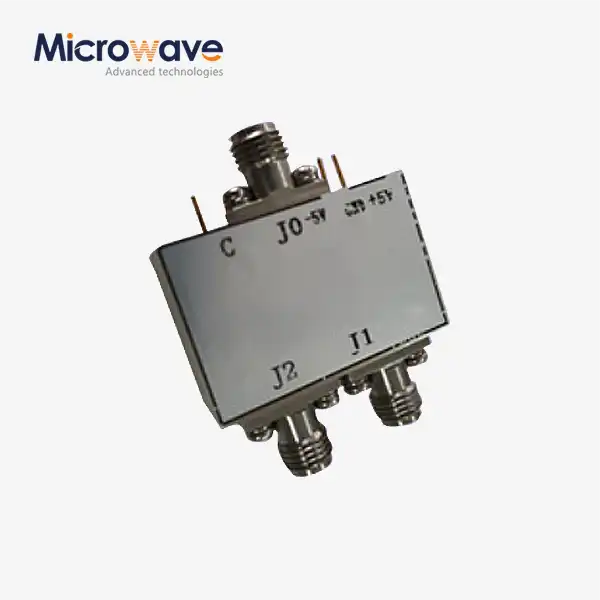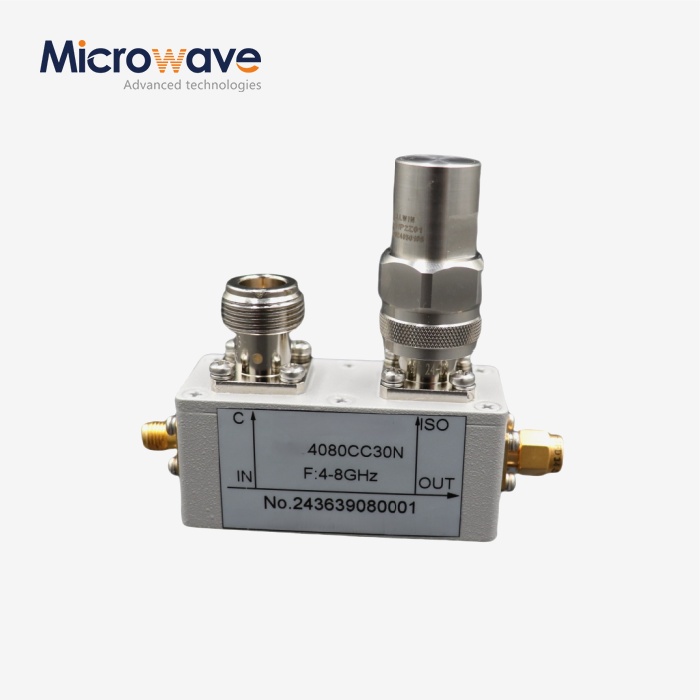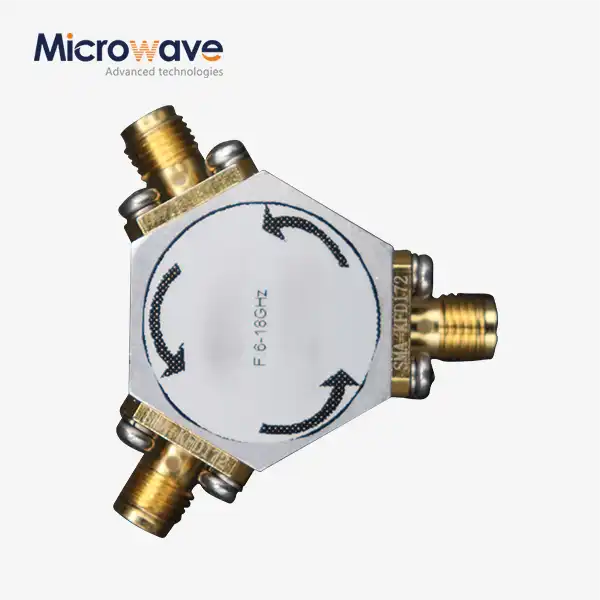High Power Waveguide Isolators: Key Features & Uses
When transmitter systems face devastating signal reflections that threaten expensive equipment and compromise mission-critical operations, engineers turn to a specialized solution. High Power Waveguide Isolator technology stands as the essential safeguard that prevents reflected signals from traveling backward into sensitive components, ensuring system reliability in satellite communications, defense radar, and aerospace navigation. This comprehensive guide explores the key features, technical specifications, and diverse applications that make these components indispensable in modern microwave systems.
Understanding High Power Waveguide Isolator Technology
High Power Waveguide Isolator devices represent a critical advancement in microwave engineering, functioning as non-reciprocal components that allow electromagnetic signals to pass freely in one direction while effectively blocking or absorbing signals traveling in the opposite direction. The fundamental operating principle relies on Faraday rotation within ferrite materials, which creates a one-way valve effect for microwave energy. When configured properly, a High Power Waveguide Isolator directs unwanted reflections away from the power source into a matched dummy load, protecting transmitters from potentially catastrophic damage caused by standing waves and impedance mismatches. The architecture of these isolators evolved from junction circulator technology, essentially representing a three-port circulator with one port terminated in a matched impedance. This configuration transforms the device into a two-port isolator that maintains signal integrity while handling substantial power levels. Advanced Microwave Technologies Co., Ltd manufactures isolators in various waveguide sizes spanning frequency bands from 0.5 GHz to 110 GHz, with designs optimized for reliability, cost-effectiveness, and manufacturability from the initial design stage.
Core Operating Principles and Design Philosophy
The effectiveness of a High Power Waveguide Isolator depends on careful selection and biasing of ferrite materials, which determine the device's isolation performance and insertion loss characteristics. Modern isolator designs emphasize minimizing insertion loss while maximizing isolation between ports, typically achieving isolation values of 20 dB or higher. The ferrite elements operate within precisely controlled magnetic fields that create differential phase shifts for forward and reverse traveling waves, effectively steering reflected energy away from the source. Advanced Microwave offers waveguide isolators with typical insertion loss of just 0.3 dB, ensuring minimal signal degradation while maintaining robust protection capabilities. Material selection plays a crucial role in achieving optimal High Power Waveguide Isolator performance across wide temperature ranges and power levels. Aluminum and copper construction provides excellent thermal conductivity to dissipate heat generated during high-power operation, with some advanced designs incorporating diamond heat sinks that offer thermal conductivity approaching 2200 W/m·K—more than five times higher than copper. This thermal management capability enables continuous operation at power levels up to 1000 watts or higher, with environmental specifications supporting operation from -40°C to +70°C. The mechanical precision achieved through advanced manufacturing techniques ensures consistent VSWR performance, typically maintaining values below 1.2:1 across the specified bandwidth.
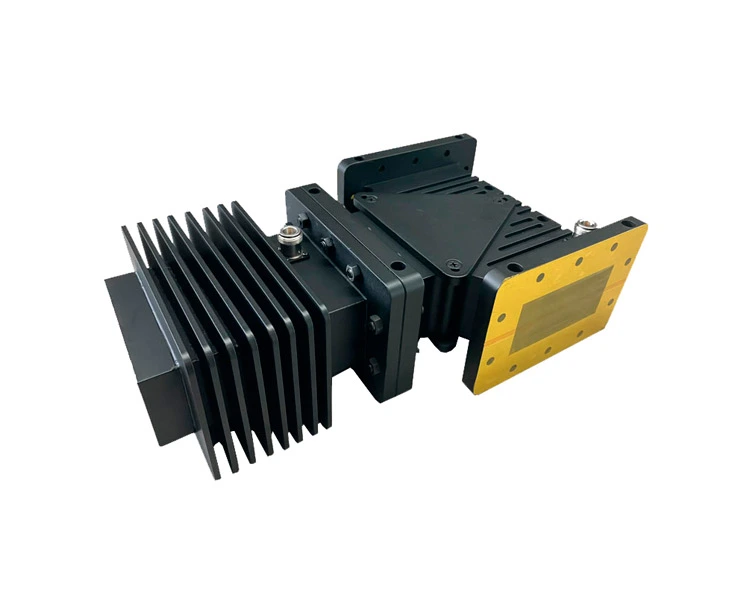
Key Features of High Power Waveguide Isolators
Modern High Power Waveguide Isolator designs incorporate multiple advanced features that address the demanding requirements of contemporary microwave systems. Low insertion loss represents perhaps the most critical performance parameter, as every tenth of a decibel lost in the isolator directly reduces system efficiency and available transmit power. Advanced Microwave's isolators achieve typical insertion loss values of 0.3 dB across 800 MHz bandwidth, ensuring that minimal signal energy is dissipated within the component itself. This exceptional efficiency proves particularly valuable in satellite communication systems where every watt of transmitted power carries significant cost implications and in radar systems where detection range depends directly on transmitted power levels. High power handling capability distinguishes professional-grade High Power Waveguide Isolator products from lower-specification alternatives. The ability to handle continuous wave power levels of 1000 watts or more without performance degradation requires sophisticated thermal design and careful material selection. The isolator must not only withstand the forward power traveling through the device but also safely dissipate reflected power that may approach full transmitter power under worst-case short-circuit conditions. Advanced manufacturing processes ensure that ferrite materials maintain their magnetic properties under high-temperature conditions, while precision-machined waveguide sections maintain dimensional stability that preserves electrical performance throughout the device's operational life.
Isolation Performance and Bandwidth Characteristics
The isolation specification defines how effectively a High Power Waveguide Isolator blocks reverse-traveling signals, measured as the ratio between forward and reverse transmission expressed in decibels. Typical isolation values of 20 dB represent a 100:1 power ratio, meaning that for every watt of reflected power entering the isolator's output port, only 10 milliwatts reaches the input port toward the transmitter. This level of protection proves sufficient for most applications, though specialized designs can achieve 30 dB or higher isolation for particularly sensitive systems. The isolation performance remains relatively constant across the specified bandwidth, with Advanced Microwave's designs maintaining specifications across 800 MHz or wider frequency ranges depending on the operating band. Bandwidth represents another critical consideration in High Power Waveguide Isolator selection, as modern communication systems often operate across multiple frequency channels or require frequency agility for adaptive applications. Standard waveguide bands typically extend to 40% on either side of center frequency, but advanced isolator designs achieve extended bandwidths exceeding 50% from center frequency. This wide bandwidth capability provides system designers greater flexibility in architecting multi-channel systems, frequency-hopping radars, and broadband communication links. The flat frequency response across the full bandwidth ensures consistent performance regardless of operating frequency, eliminating the need for retuning or adjustment when changing channels.
Applications Across Critical Industries
High Power Waveguide Isolator technology finds essential applications throughout the satellite communications industry, where system reliability and signal quality directly impact service availability and revenue. Ground station transmitters operating in C-band, X-band, Ku-band, and Ka-band frequencies require robust protection against antenna reflections caused by weather conditions, misalignment, or equipment failures. A High Power Waveguide Isolator positioned immediately after the high-power amplifier ensures that reflected signals never reach the amplifier's output stage, preventing oscillations, spurious emissions, and potential device failure. The isolator's low insertion loss minimizes the reduction in effective isotropic radiated power (EIRP), while its high isolation protects multi-thousand-dollar amplifiers from damage. Defense and military applications represent another critical domain where High Power Waveguide Isolator reliability proves indispensable. Surveillance radar systems, fire control radars, and electronic warfare equipment operate under demanding conditions that may include rapid frequency changes, high-power operation, and exposure to hostile electronic countermeasures. The isolator prevents reflected energy from enemy jamming signals or antenna scan reflections from disrupting the transmitter's stable operation. Military specifications often require High Power Waveguide Isolator components to withstand shock, vibration, and extreme temperature variations while maintaining performance specifications, making material quality and robust construction paramount considerations.
Aerospace and Navigation System Integration
Aerospace applications demand the highest levels of reliability from every component, as in-flight failures cannot be easily repaired and may compromise mission success or safety. Navigation systems, weather radar, and communication equipment aboard aircraft rely on High Power Waveguide Isolator technology to maintain signal integrity in the face of antenna loading variations caused by aircraft attitude changes, precipitation static, and atmospheric conditions. The compact design and lightweight construction of modern isolators help minimize weight penalties in airborne systems, while their wide operating temperature range accommodates the thermal extremes encountered at altitude and during rapid climatic transitions. Weather monitoring systems utilize High Power Waveguide Isolator components to protect sensitive radar transmitters from the variable loading presented by large rotating antenna systems. As weather radar antennas scan through 360 degrees, the return loss characteristics may vary with antenna position due to mechanical tolerances, radome effects, or nearby structures. The isolator maintains stable transmitter operation despite these variations, ensuring consistent radar performance and accurate precipitation measurement. The robust construction of industrial-grade High Power Waveguide Isolators enables continuous 24/7 operation required for weather surveillance systems that cannot tolerate downtime during critical weather events.
Advanced Microwave Technologies Capabilities
Advanced Microwave Technologies Co., Ltd has established itself as a leading High Power Waveguide Isolator manufacturer through over two decades of focused experience in microwave component design and production. The company's 24-meter microwave darkroom facility provides unparalleled measurement capabilities for characterizing antenna and component performance across frequency ranges from 0.5 GHz to 110 GHz. This state-of-the-art test facility incorporates an Antenna Plane Near and Far Field Measuring Recombination Chamber that enables engineers to meticulously analyze radiation patterns, gain characteristics, and impedance parameters. Such comprehensive testing ensures that every High Power Waveguide Isolator leaving the facility meets stringent performance specifications and provides reliable operation in demanding field conditions. The company's ISO 9001:2015 certification reflects its commitment to quality management throughout the design, manufacturing, and delivery processes. From initial customer consultation through final product testing and shipment, documented procedures ensure consistency and traceability. This systematic approach to quality control proves particularly valuable for High Power Waveguide Isolator production, where tight tolerances in ferrite material properties, magnetic biasing, and mechanical dimensions directly determine electrical performance. Advanced Microwave's quality systems integrate design reviews, in-process inspections, and comprehensive final testing to verify that each isolator achieves specified insertion loss, isolation, power handling, and VSWR performance before customer delivery.
Customization and OEM Services
Recognizing that standard catalog components cannot address every application requirement, Advanced Microwave Technologies Co., Ltd offers comprehensive OEM services for High Power Waveguide Isolator customization. Engineers work directly with customers to understand specific system requirements, environmental conditions, and mechanical constraints that influence isolator design. Customization options include non-standard frequency ranges, enhanced power handling through advanced thermal designs, alternate flange configurations for system integration, and environmental hardening for extreme operating conditions. This collaborative design approach ensures that the final High Power Waveguide Isolator product optimally matches application requirements rather than forcing system compromises to accommodate off-the-shelf components. Rapid prototyping capabilities enable customers to evaluate custom High Power Waveguide Isolator designs before committing to production quantities, reducing development risk and accelerating time-to-market for new systems. Advanced Microwave's experienced engineering team provides technical support throughout the product lifecycle, from initial specification development through installation guidance and troubleshooting assistance. The company's efficient manufacturing processes and streamlined supply chain management deliver fast turnaround times even for customized components, with typical lead times significantly shorter than industry averages. This combination of technical expertise, manufacturing flexibility, and responsive customer service makes Advanced Microwave an ideal partner for both high-volume production requirements and specialized low-volume applications.
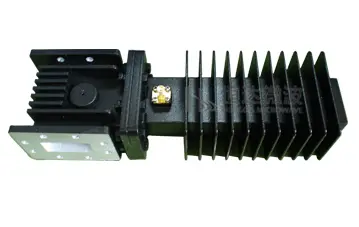
Technical Specifications and Performance Parameters
Understanding the detailed technical specifications of High Power Waveguide Isolator components enables informed selection decisions that optimize system performance. Insertion loss specifications indicate the signal power dissipated within the isolator during normal forward transmission, with lower values indicating more efficient operation. Advanced Microwave's standard isolator designs achieve typical insertion loss of 0.3 dB, though this parameter varies somewhat with frequency, temperature, and power level. For a system transmitting 1000 watts, 0.3 dB insertion loss corresponds to approximately 68 watts dissipated in the isolator, generating heat that must be conducted away through the waveguide structure. The aluminum or copper construction provides excellent thermal conductivity that prevents excessive temperature rise during continuous operation. Isolation performance quantifies the High Power Waveguide Isolator's effectiveness in blocking reverse-traveling signals, with typical specifications of 20 dB providing a 100:1 power ratio between forward and reverse transmission. This means that if 100 watts of reflected power enters the isolator's output port, only 1 watt reaches the input port toward the transmitter—a 99% reduction in reflected power exposure. The remaining 99 watts is absorbed in the isolator's internal matched load, converted to heat, and dissipated through the waveguide structure. Higher isolation values of 25 dB or 30 dB may be specified for particularly sensitive applications, though achieving these enhanced specifications typically requires larger physical dimensions and may result in slightly higher insertion loss.
Power Handling and Environmental Specifications
The maximum forward power specification defines the continuous wave power level that the High Power Waveguide Isolator can handle without performance degradation or risk of damage. Advanced Microwave's standard isolators support forward power levels up to 1000 watts, with custom designs available for higher power requirements. Power handling limitations arise primarily from thermal considerations, as both insertion loss and absorbed reflected power generate heat within the ferrite materials and resistive load. Excessive temperature rise can cause permanent changes in ferrite magnetic properties, degrading isolation performance or causing catastrophic failure. The aluminum and copper materials specified for Advanced Microwave isolators provide superior heat dissipation compared to alternative materials, enabling reliable high-power operation. Environmental specifications define the operating conditions under which the High Power Waveguide Isolator maintains performance specifications. Advanced Microwave's standard isolators operate across the -40°C to +70°C temperature range, accommodating outdoor installations, airborne applications, and industrial environments without requiring temperature-controlled enclosures. The mechanical construction resists vibration, shock, and atmospheric pressure variations, with sealed waveguide interfaces preventing moisture ingress that could degrade electrical performance. These robust environmental specifications reflect careful material selection, precision manufacturing, and comprehensive testing that verify performance under simulated field conditions before products ship to customers.
Selection Guidelines for System Designers
Proper High Power Waveguide Isolator selection requires careful consideration of multiple interrelated parameters that collectively determine system performance and reliability. Frequency range represents the primary selection criterion, as the isolator must cover all operating frequencies with adequate performance margin. Waveguide size corresponds directly to frequency band, with larger waveguides supporting lower frequencies and smaller waveguides accommodating higher frequencies. Advanced Microwave manufactures isolators across the complete range of standard waveguide sizes, ensuring availability for applications from UHF through millimeter-wave frequencies. Selecting an isolator with bandwidth somewhat wider than the minimum system requirement provides margin for frequency drift, channel expansion, or repurposing the system for alternate applications. Power handling requirements must account for both continuous average power and peak power during modulated transmission. A High Power Waveguide Isolator rated for 1000 watts continuous power may handle higher peak powers during pulsed operation, provided the average power remains within specifications and pulse duty cycles don't create excessive instantaneous heating. Conservative power rating selection provides reliability margin and extends component lifetime, particularly in applications where maintenance access is limited or replacement costs are high. For critical applications such as satellite ground stations or air traffic control radar, specifying isolators rated for significantly higher power than nominal operating levels ensures robust protection even during off-normal conditions or equipment malfunctions.
Integration and Installation Considerations
Mechanical integration of High Power Waveguide Isolator components into microwave systems requires attention to waveguide flange compatibility, mounting provisions, and thermal management. Standard waveguide flanges follow EIA or IEC specifications that ensure mechanical and electrical compatibility between components from different manufacturers. Advanced Microwave provides isolators with standard flange configurations, though custom flange types can be accommodated for specialized applications. Proper flange alignment and torque during installation ensures low-VSWR connections that maintain system performance and prevent arcing at high power levels. The isolator should be oriented to allow natural convection cooling when possible, with adequate clearance around the device to permit airflow and heat dissipation. System integration testing should verify High Power Waveguide Isolator performance under actual operating conditions, including measurement of insertion loss, isolation, and VSWR across the full frequency range at operating power levels. These measurements confirm proper installation and validate that the isolator meets specifications in the system environment. Periodic maintenance inspections check for mechanical damage, corrosion, or contamination that might degrade performance over time. The robust construction and conservative design of Advanced Microwave isolators minimizes maintenance requirements, though basic visual inspection and performance verification ensure continued reliable operation throughout the component's service life.
Conclusion
High Power Waveguide Isolator technology represents an essential element in protecting valuable transmitter equipment while maintaining signal quality across satellite, defense, aerospace, and telecommunications applications. Advanced Microwave Technologies Co., Ltd delivers proven solutions backed by decades of engineering expertise and comprehensive testing capabilities that ensure reliable performance.
Cooperate with Advanced Microwave Technologies Co., Ltd
Partner with Advanced Microwave Technologies Co., Ltd, a leading China High Power Waveguide Isolator manufacturer and China High Power Waveguide Isolator supplier offering competitive High Power Waveguide Isolator prices with superior quality. As a trusted China High Power Waveguide Isolator factory providing China High Power Waveguide Isolator wholesale services, we deliver High Quality High Power Waveguide Isolators with fast turnaround and expert technical support. Contact us at craig@admicrowave.com to discuss your requirements and discover why global customers choose our High Power Waveguide Isolators for sale for their critical applications.
References
1. Baden Fuller, A.J. "Ferrites at Microwave Frequencies." London Institution of Electrical Engineers Monograph Series, Peter Peregrinus Ltd.
2. Helszajn, J. "Nonreciprocal Microwave Junctions and Circulators." John Wiley & Sons Engineering Publications.
3. Linkhart, Douglas K. "Microwave Circulator Design." Artech House Microwave Library, Second Edition.
4. Pozar, David M. "Microwave Engineering." John Wiley & Sons Technical Publications, Fourth Edition.




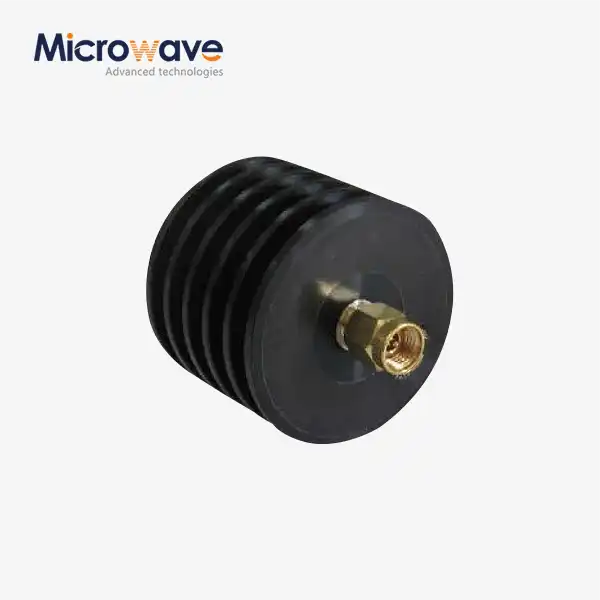
_1733809032116.webp)


